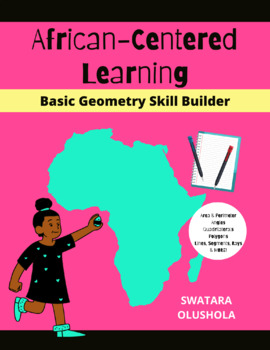African-Centered Learning: Basic Geometry Skill Builder Workbook Download
- PDF
Description
This African-Centered, Culturally Affirming Workbook is an excellent resource for any educator or homeschool parent. It is suited for grades 2-5, and focuses on basic geometry skills, helping to build a strong foundation for future math concepts. This workbook is different than other resources because it is specifically designed to be empowering. Additionally, the activities are designed to be educational and engaging, so children can learn without feeling overwhelmed. This workbook is a great way to give young students an early appreciation for their culture, and to ensure they are prepared for their future studies in mathematics. Sign Up for LIVE, African-Centered, online core classes and electives at www.wholelivingacademy.com . Physical copies available for purchase on Amazon.





